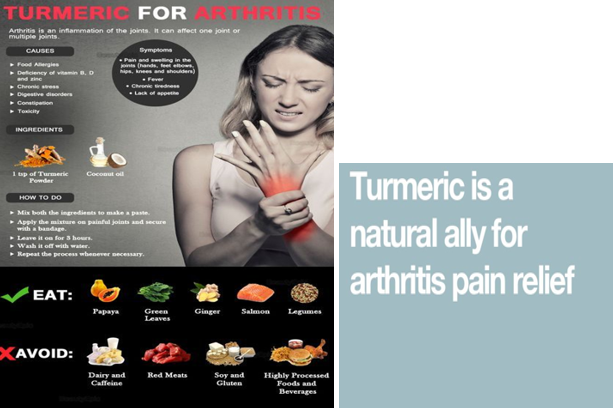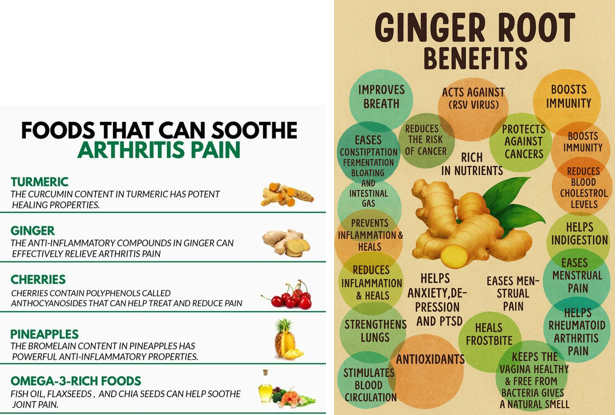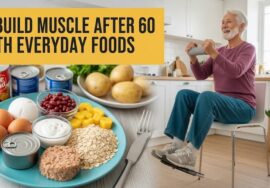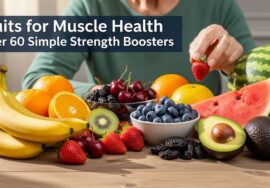If stiff knees or achy hands are slowing you down, small daily habits can make a big difference—without expensive gadgets. Below are seven gentle, at-home remedies that many adults 50+ use to feel and move better. Share this guide with your clinician if you take prescription medicines or have long-standing conditions.

Table of Contents
- Quick wins
- Heat–Cold Routine for Stiffness & Flare-Ups
- Turmeric + Black Pepper (Easy Kitchen Add-On)
- Ginger on Flare Days
- Omega-3 Foods for Ongoing Joint Support
- Epsom Salt Soaks (Hands & Feet)
- OTC Capsaicin Cream (0.025–0.075%)
- Gentle Daily Movement (Your “Always-On” Remedy)
- Smart “Amplifiers”
- FAQs
- SUMMARY
- High-quality References
Quick wins
- Heat before movement; ice after activity to calm swelling. Arthritis Foundation
- Topical capsaicin can help knee/hand pain with steady use over 2–4 weeks. Arthritis Foundation
- Build an anti-inflammatory plate and add omega-3 foods (fish, walnuts, flax). www.heart.org
- Daily, joint-friendly movement (walking, tai chi, water exercise) protects function. CDC
- If weight is a concern, even modest loss reduces knee load and pain. PubMedArthritis Foundation
1) Heat–Cold Routine for Stiffness & Flare-Ups
When to use heat: morning stiffness or before activity (warm shower/heating pad 10–15 minutes).

When to use cold: after activity or swelling (towel-wrapped gel pack 10 minutes).
Try a simple cycle: Heat 10 min → gentle range-of-motion → cold 10 min. Guidance on when and how to use each: Arthritis Foundation’s overview of hot/cold for osteoarthritis. Arthritis Foundation
Helpful read: Arthritis Foundation explains practical heat choices (warm bath, paraffin for hands) and how cold reduces swelling. Arthritis Foundation
2) Turmeric + Black Pepper (Easy Kitchen Add-On)
Curcumin (in turmeric) is a popular anti-inflammatory; black pepper (piperine) helps absorption. Stir into soups or try a daily tea:

Turmeric-Ginger “Joint Tea”
1 cup hot water · ½ tsp turmeric · ¼ tsp fresh ginger · pinch black pepper · lemon/honey optional.
(Ask your clinician first if you use blood thinners.)
Related read on your site: Turmeric benefits (simple ways to use it at home).
→ Internal link: keepfitquote.com/turmeric-benefits/ keepfitquote.com
Also see “Golden Milk” under blood-pressure-friendly drinks—a cozy way to sip turmeric with pepper.
→ Internal link: keepfitquote.com/blood-pressure-lowering-drinks/ keepfitquote.com
3) Ginger on Flare Days
Ginger shows modest pain-relief potential when used consistently (tea, stir-fries, smoothies). Check interactions if you’re on anticoagulants. See NIH’s consumer summary on ginger. CDC

4) Omega-3 Foods for Ongoing Joint Support
Omega-3 fats help your body temper inflammatory signals. Aim for two fish meals weekly (salmon, sardines, trout) and sprinkle ground flax or chia onto breakfast. The American Heart Association has an easy primer on food sources and why they matter. www.heart.org

Want a friendly primer on food + connective tissue?
→ Internal link: Best collagen-boosting foods (protein + vitamin C for tissues). keepfitquote.com/best-collagen-boosting-foods/ keepfitquote.com
5) Epsom Salt Soaks (Hands & Feet)
A warm Epsom salt soak can relax tight muscles around small joints—nice for hands and feet after chores. Dissolve ½ cup in warm water; soak 10–15 minutes. (If you have diabetes/neuropathy or skin breaks, ask your clinician first.) Cleveland Clinic discusses when soaks help and basic safety. Cleveland Clinic+1

6) OTC Capsaicin Cream (0.025–0.075%)
Capsaicin (from chili peppers) may reduce pain signaling with regular use.

How to use well
- Apply a pea-size to painful joints 3–4×/day.
- Wash hands after; expect mild warmth/tingle.
- Judge results after 2–4 weeks, not two days.
See the Arthritis Foundation’s guide to topical medicines (including capsaicin). Arthritis Foundation
7) Gentle Daily Movement (Your “Always-On” Remedy)
Motion nourishes cartilage and keeps support muscles active. The CDC lists joint-friendly options ideal for 50+: walking, cycling, tai chi, swimming/water aerobics, and light strength work. CDC

Starter plan (15–20 minutes)
- Warm-up (3 min): easy marching.
- Range-of-motion (5 min): knee bends, ankle/wrist circles.
- Strength (5–7 min): chair sit-to-stands, wall push-ups, band rows.
- Cool-down (2–3 min): gentle stretches.
Build on this with your site’s guides:
→ Remedies to strengthen bones & legs (chair squats, heel raises). keepfitquote.com/remedies-for-seniors-to-strengthen-bones/ keepfitquote.com
→ Eggs for seniors (protein to protect muscle). keepfitquote.com/eggs-for-seniors/ keepfitquote.com
Smart “Amplifiers”
- Weight management: Each pound lost removes about 4 pounds of pressure from the knees during daily steps—small changes add up. PubMedArthritis Foundation
- Better sleep = lower pain perception: If nights are rough, try this internal read on sleeping through the night.
→ keepfitquote.com/category/all-categories/lifestyle-and-selfcare/ (find “How to Sleep Straight 8 Hours”). keepfitquote.com - Low-inflammation plate: See your site’s “Foods That Cause Inflammation” for simple swaps.
→ keepfitquote.com/foods-that-cause-inflammation/ keepfitquote.com
FAQs
1) What’s the best quick home remedy for sore knees after 50?
Try heat before movement and ice after activity, then add a 10-minute walk. Arthritis Foundation
2) Does capsaicin cream really work for arthritis?
It can help with knee/hand pain when used 3–4× daily for several weeks. Arthritis Foundation
3) Is turmeric good for joint pain?
Turmeric with black pepper may support comfort as part of a balanced diet. See “turmeric benefits.”
→ keepfitquote.com/turmeric-benefits/ keepfitquote.com
4) What fish help joint stiffness?
Salmon, sardines, and trout provide omega-3s; aim for two fish meals weekly. www.heart.org
5) Are Epsom salt foot or hand soaks safe for seniors?
Often, yes—if your skin is intact and you don’t have neuropathy. Check with your clinician. Cleveland Clinic
6) Which exercises are easiest on older joints?
Walking, tai chi, cycling, swimming, and water exercises. CDC
7) How soon will I feel results from home remedies?
Some relief is immediate (heat/ice); others (capsaicin, diet) take 2–4 weeks of consistency. Arthritis Foundation
8) Can a few pounds of weight loss help knee pain?
Yes—reducing body weight reduces knee joint load with every step. PubMed
9) What simple daily food tweaks support joints?
Add omega-3s (fish, walnuts, flax) and reduce ultra-processed foods. www.heart.org
10) Is hot-cold contrast safe for hands with arthritis?
Generally yes—limit each to ~10 minutes and protect skin with a towel. Arthritis Foundation
11) Any evening routine to cut morning stiffness?
Short walk, warm shower, gentle stretches; prep a heating pad for morning use. Arthritis Foundation
12) What if joint pain worsens or a joint becomes hot/red?
Contact your clinician; sudden swelling, warmth, or fever warrants evaluation.
SUMMARY
- Combine heat → move → ice, daily joint-friendly activity, and steady topical capsaicin. Arthritis Foundation+1
- Support long-term comfort with omega-3 foods, turmeric + black pepper, and short Epsom soaks (with safety checks). www.heart.orgCleveland Clinic
- If weight is a factor, modest loss meaningfully reduces knee load per step. PubMed
High-quality References
- Arthritis Foundation: OA treatment options; heat/cold use; topicals. Arthritis Foundation+2Arthritis Foundation+2
- CDC: Joint-friendly physical activity ideas for older adults. CDC
- American Heart Association: Omega-3 foods guidance. www.heart.org
- Cleveland Clinic: When Epsom soaks may help and safety notes. Cleveland Clinic
- PubMed / Arthritis & Rheumatism study: 1 lb weight loss ≈ 4 lb less knee load per step. PubMed









TkugfMTXNnWSu
tVjXhkfE
mxXsrwmb
EQOicXidihppLOCd
yVoLumZO
eJrWsrnCPatRJxHCg